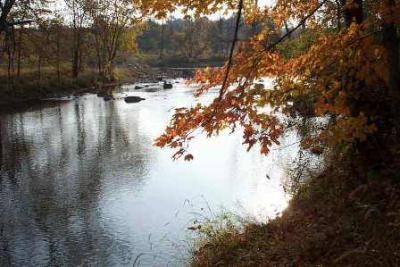Boquet River Fishing Spot
- Elevation: 164'
- Last Modified By: vinny60 on 09/07/09 02:02 PM
- Ask about Boquet River in our Fishing Forums
Photos
Fish Species
Comments
-
Some choice flies include Muddler Minnows, Gray and Black Ghosts, other streamers, large nymphs, and even dries. Hair-Wing Atlantic Salmon flies such as Rusty Rats, and Coburns will work. Yellows and oranges are ideal colors, especially in off-color water. When the water clears up, tippets need to be lighter, and more subtle colors, such as light blue, can work well. Having a spare spool or two can also aid your approach. A floating and sinking line is almost a must, and two different speed-sinking lines are preferable. It's a good idea to take your time in your approach and study the different currents and seams to locate likely holding spots. Sometimes, salmon will use different lies than trout. They enjoy hard-pushing water over their heads, and more often than not, will lie in front of a submerged rock instead of behind one. Someday you should visit the Boquet River to witness the mighty landlocked Atlantic Salmon.
Boquet River Description
The Boquet River, located in Northeastern New York, is not known for its trout population, but for its Atlantic Salmon runs. Flowing into Lake Champlain, and with the construction of the fish ladder in Willsboro, these acrobatic salmon can migrate up the Boquet some 12 miles to the falls at Wadhams. This fishery gives anglers the opportunity to catch landlocked Atlantic Salmon as large as 10 pounds. Fish close to 14 pounds have been caught here, although the average size is two to four pounds. Brown trout and steelhead also migrate upriver from the lake, presenting more opportunities for anglers. There is an exception to the General Angling Regulations for trout. Flowing northeast after leaving its source, the Boquet winds for more than 40 miles before entering Lake Champlain. This is a fast-moving, tumbling river with pockets and hard-pushing classic salmon pools, normally found in a New Brunswick or Quebec river. The river is moderately wide and deep, making wading tough in spots, so be sure you bring along a wading staff if you're not very sure-footed. There are two annual salmon runs up the Boquet, in the spring and the fall. The salmon migrate up the Boquet in the spring when ice-out occurs, which is usually from mid-March to mid-April. When this happens, warmer river water sends a message to the awaiting salmon that it's time to feed. The abundance of food being washed into the lake sends the salmon racing upriver. This time of year, the fish are there only to feed, and it's fairly easy to find willing participants. On average, the fish are a little smaller-sized in the spring than in the fall (about two to four pounds). By late May, the fish are back in the lake for the rest of the summer. By late September when the water temperatures in the river drop and the fall rains come down, the salmon once again begin to migrate upriver. These fish are usually quite larger than the springtime salmon. In the fall, the fish average four to six pounds; most are not smaller than four pounds and can potentially weigh up to 10 pounds. Unfortunately, these fall salmon are much harder to catch than the springtime fish. It's because they are there to spawn and usually require repeated presentation of your fly before they're provoked into striking. The good news is that this is the time to catch a trophy. A good way to learn the river is to start from the falls at Waldhams. Here, you can park and work your way downstream. There are many places to park along Route 22 where it crosses the river. As you head downriver, you'll find numerous admirable pools and will be enticed to stop frequently, anticipating all of the fish that are there for the taking. Several miles downstream from Waldhams, the river meets the North Branch. The North Branch provides anglers with a few more miles of river to fish; however, the fish are more scarce, and so are the people. This is a good section to look for and spot fish to target cast to. From the junction, the river flows for a few miles until it hits Lake Champlain. The river is closed from the Route 22 Bridge to the bottom of Willsboro Falls to protect the falls area and give the salmon a chance to rest. At the base of the falls, you'll find one of the better pools on the river. The fish stack up here before venturing up the ladder to proceed upstream.
